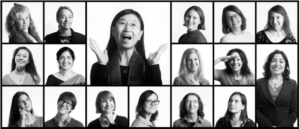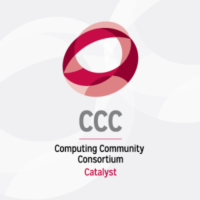Microsoft Researchers on What to Expect in 2017 and 2027
 The following is a guest blog post from CCC Executive Council Member Ben Zorn, a principal researcher and co-manager of the Research in Software Engineering group at Microsoft Research in Redmond, Washington.
The following is a guest blog post from CCC Executive Council Member Ben Zorn, a principal researcher and co-manager of the Research in Software Engineering group at Microsoft Research in Redmond, Washington.
In 2006 Jeannette Wing made the case that computational thinking was a skill set that everyone, not just computer scientists, would benefit from learning and employing. In December, we observed Computer Science Education Week to celebrate the shared lingua franca of computational thinking that brings together the great diversity of individuals from around the world with a common purpose.
On the Microsoft Blog, 17 outstanding researchers from all parts of computer science share their vision of how computational thinking will transform our world in the next year and the next decade. Computer technology has delivered capabilities and benefits that were unimaginable 20 years ago – read about the deep insights these researchers have on how it will transform our world in the next 10 years.
See a few of them, including Computing Research Association (CRA) Board Member, Kathryn S. McKinley, below:
Xiaoyan Sun, lead researcher, Asia research lab
Follow her on TwitterWhat will be the key advance in computer vision in 2017?
The key advance in 2017 will be the continued rapid progress in computer vision based on deep learning methods. This will be evident in highly accurate object recognition technologies that approach human ability, lightweight portable vision systems and wide adoption of vision platforms.What will be the key advance or topic of discussion in computer vision in 2027?
By 2027 the ability for computers to “see” will be ubiquitous as we will have highly developed imaging devices, powerful computing resources and combined deep and wide learning techniques. Advances in these techniques will lead to ubiquitous vision “eyes” that can “see” and empower humans in daily life and all kinds of professions, from manufacturing and health care to finance and security.
Oriana Riva, researcher, Redmond, MSR NExT
What will be the key advance in mobile computing in 2017?
In 2017, systems will increasingly re-architect themselves to support interactions without a graphical user interface. We’ll see fewer users installing apps on their devices and more apps turning into behind-the-scenes services for chatbots and personal digital assistants.What will be the key advance or topic of discussion in mobile computing in 2027?
The key advance in mobile computing by 2027 will be a significantly expanded relationship with the digital world, encompassing almost any “thing” that exists in our surroundings. We’ll engage with intelligent and personal systems that truly understand us, that we can trust and that know us well enough to anticipate and serve our needs.
Kathryn S. McKinley, principal researcher, Redmond research lab
Follow her on Twitter
What will be the key advance in programming languages and software engineering in 2017?
In programming languages research, the most revolutionary change on the horizon is probabilistic programming, in which developers produce models that estimate the real world and explicitly reason about uncertainty in data and computations. The programming language community is continuing to build the foundations of this new software world and some exciting new applications will emerge by the end of 2017.What will be the key advance or topic of discussion in programming languages and software engineering in 2027?
By 2027, the majority of software engineers will be facile in programming systems that reason about estimates and produce models with statistical methods. This sea change will deliver applications that seamlessly integrate sensors, machine learning and approximation to interact with human beings in entirely new, meaningful and correct ways.
Read more and see all 17 outstanding researchers here.











